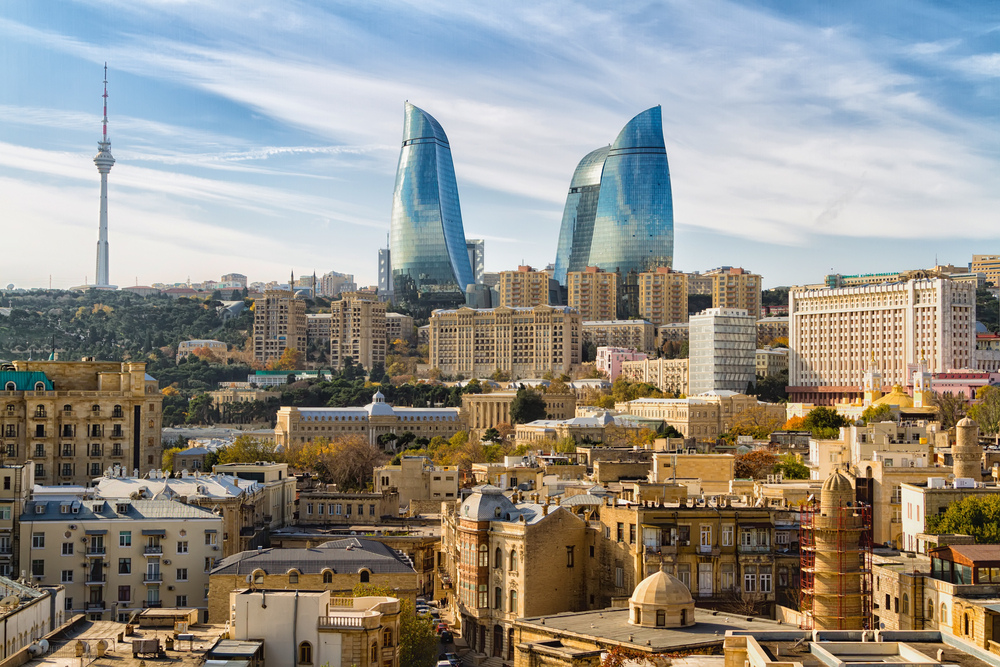Baku, the capital of Azerbaijan, is located on the western coast of the Caspian Sea. The city is home to several universities, research institutes and museums. It is also considered an important economic and cultural centre.
Baku and the trade in oil
Due to its favorable location, the history of the city is significant. It was an important transport hub early on, and in the early modern period, Baku is mentioned as a centre of trade.
The natural oil deposits of the area are also significant. The oil was already used before the birth of Christ. Later also to illuminate the temples of the Zoroastrians. Marco Polo reported on the oil trade as early as the 13th century. Baku even delivered its raw material to India with caravans.
The first mechanical oil drilling in 1846 was followed by many more. Until the beginning of the 20th century, half of the world’s oil came from Baku. This boom led to a huge increase in the city’s population and Baku’s growth exceeded that of Paris, London and New York.
Sights in and around Baku
The Maiden’s Tower – Landmarks and Riddles
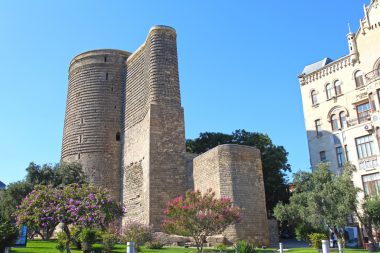
The almost 30-meter-high tower on the coast of the Caspian Sea belongs to the old town of Baku and is therefore also part of the UNESCO World Heritage Site.
It was probably part of the eastern fortification, which no longer exists.
Neither the time nor the purpose of the construction could be clearly determined so far. The tower dates back to the 11th century at the latest, but could also have its beginnings as early as the 5th century.
The construction of the tower is extremely unusual. Originally, its interior consisted of a hollow cylinder, but in the 60s several mezzanines were added. The clay tubes, which are embedded in the walls, also puzzle the researchers and give rise to various theories about their purpose. So it is possible that the tower was intended as a fire tower for the worship of the gods. But even on the outside, the otherness of the building becomes apparent. Today it serves as a museum and vantage point, from which you can see all the way into the bay, because the waves of the lake, which once broke directly under the tower, were pushed further out by artificial embankments.
The Palace of the Shirvanshahs – Pearl of Baku
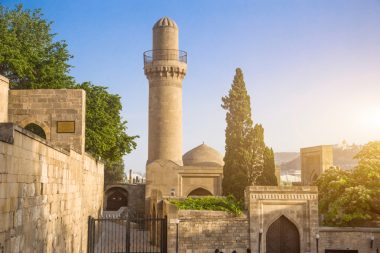
As the name suggests, the palace was built in the 15th century by the Muslim dynasty of the Shirvanshahs. The building complex is located on the hill of the İçəri Şəhər district.
In 1411, the construction of the residential palace began, making it the oldest building in the palace. In addition to it, the mosque, the mausoleum of Seyid Yahya Bakuviund, funerary vaults and other architectural structures are also part of the complex. UNESCO called the place “one of the pearls of Azerbaijani architecture”.
In addition to the architecture, there are also some museums and exhibitions to marvel at today.
Ateshgah of Baku – Temple of Fire
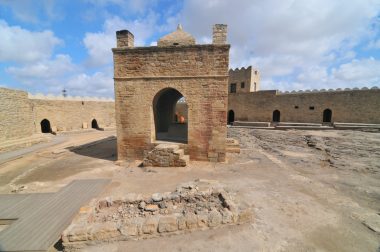
The fire temple of Baku was built in the 17. and 18th century as a monastery complex. However, its origins date back to antiquity. Until late In the 19th century, Hindu and Zoroastrian rituals were performed there. It was only abandoned with the increased oil production in the vicinity because the company extinguished the sacred fire caused by natural gas. In 1925, the temple was finally completely abandoned.
Since 1975, the restored complex has been an open-air museum and with the help of gas pipes, an imitation of the sacred fire is once again created.
Flame Towers – Flames in the middle of the city
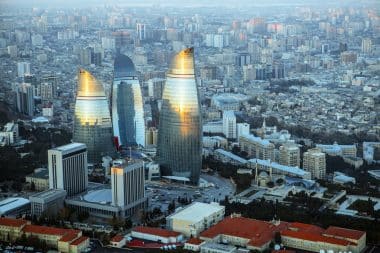
In addition to its rich history, Baku is also a stunningly modern city. The Flame Towers are a visible testimony to this. The three towers were built between 2007 and 2013. The highest of them reaches a height of 181.7 meters.
At night, the viewer is offered a special spectacle, because in the darkness the towers seem to come to life. Due to their lighting, they actually look like flickering flames.
The buildings contain offices, apartments, shops and hotels. In addition, the observation deck is open to everyone and allows a stunning view over the entire city to the Caspian Sea.
Heydər Əliyev Merkezi – Signs of Modernity
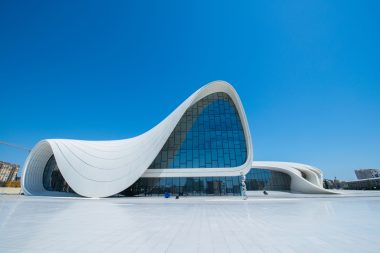
Another sign of modernity is the Heydər Əliyev Merkezi (Heydar Aliyev Center). The complex offers around 100,000 m² of space for the National Museum, various exhibition, concert and conference halls and a library.
The cultural centre was designed by the Iraqi-British architect Zaha Hadid. Construction lasted from 2007 to 2012. Two years later, the building received the Design of the Year award from the Design Museum London .
With its innovative, flowing form, the building blends beautifully into the surrounding park and almost creates a sculptural impression.
Yanar Dağ – The Burning Mountain
An unforgettable natural phenomenon is the fire, which has been burning not far from Baku since ancient times. It is caused by the natural gas in the soil. Some of the flames shoot out of the 10-meter-long crack up to three meters high into the sky. This natural earth fire is one of the few that can still be admired in the world today and Marco Polo already reported on this wonder of nature. The flames are particularly impressive in the dark and have already served as a source of inspiration for many.


